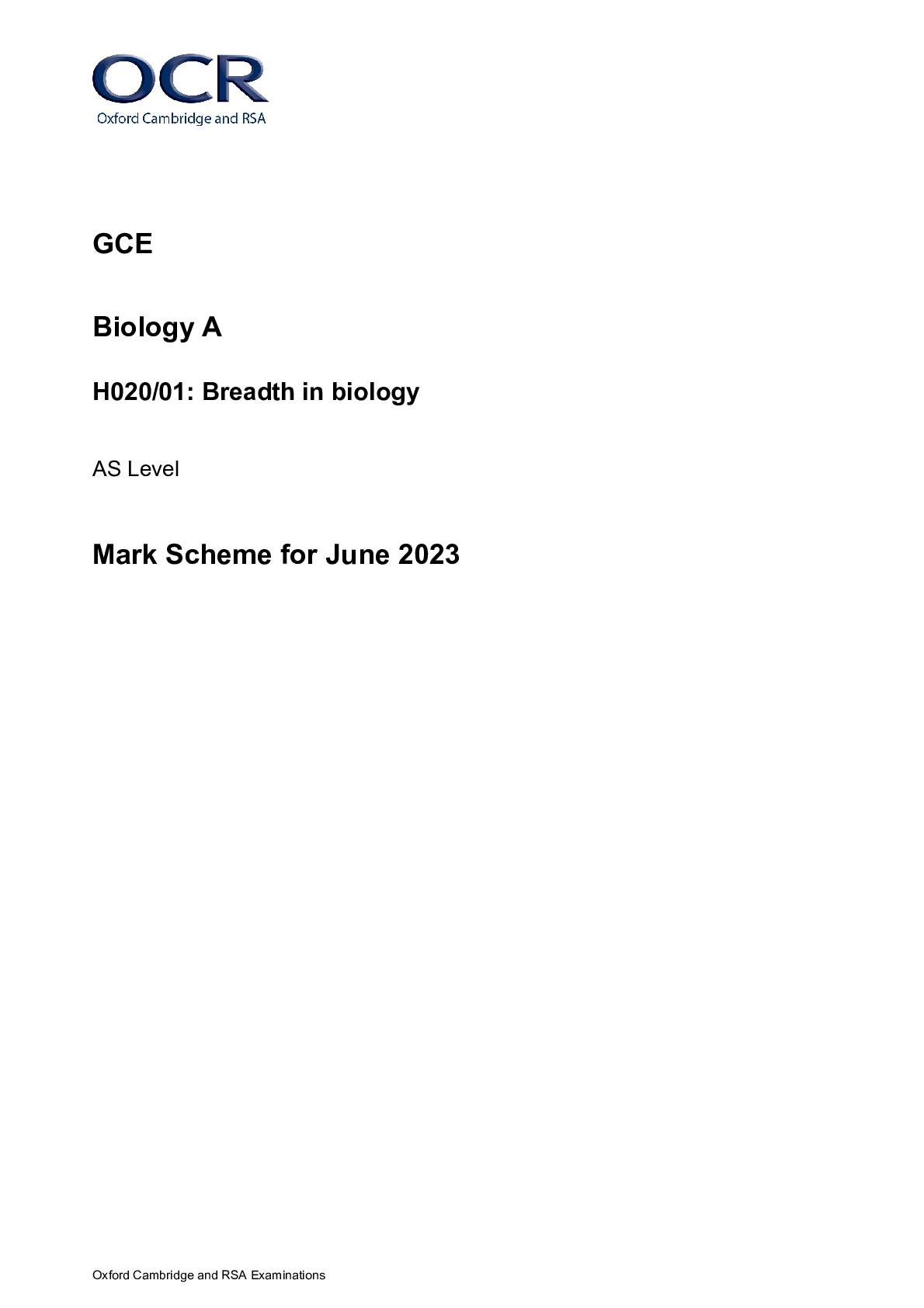Biology > MARK SCHEMES > Mark Scheme (Results) Summer 2022 Pearson Edexcel GCSE In Biology (1BI0) Paper 1F Edexcel and BTEC Q (All)
Mark Scheme (Results) Summer 2022 Pearson Edexcel GCSE In Biology (1BI0) Paper 1F Edexcel and BTEC Qualifications
Document Content and Description Below
Mark Scheme (Results) Summer 2022 Pearson Edexcel GCSE In Biology (1BI0) Paper 1F Edexcel and BTEC Qualifications Edexcel and BTEC qualifications are awarded by Pearson, the UK’s largest award ... ing body. We provide a wide range of qualifications including academic, vocational, occupational and specific programmes for employers. For further information visit our qualifications websites at www.edexcel.com or www.btec.co.uk. Alternatively, you can get in touch with us using the details on our contact us page at www.edexcel.com/contactus. Pearson: helping people progress, everywhere Pearson aspires to be the world’s leading learning company. Our aim is to help everyone progress in their lives through education. We believe in every kind of learning, for all kinds of people, wherever they are in the world. We’ve been involved in education for over 150 years, and by working across 70 countries, in 100 languages, we have built an international reputation for our commitment to high standards and raising achievement through innovation in education. Find out more about how we can help you and your students at: www.pearson.com/uk Summer 2022 Publications Code 1BI0_1F_2206_MS All the material in this publication is copyright © Pearson Education Ltd 2022 General Marking Guidance 1. All candidates must receive the same treatment. Examiners must mark the first candidate in exactly the same way as they mark the last. 2. Mark schemes should be applied positively. Candidates must be rewarded for what they have shown they can do rather than penalised for omissions. 3. Examiners should mark according to the mark scheme not according to their perception of where the grade boundaries may lie. 4. There is no ceiling on achievement. All marks on the mark scheme should be used appropriately. 5. All the marks on the mark scheme are designed to be awarded. Examiners should always award full marks if deserved, i.e. if the answer matches the mark scheme. Examiners should also be prepared to award zero marks if the candidate’s response is not worthy of credit according to the mark scheme. 1. Where some judgement is required, mark schemes will provide the principles by which marks will be awarded and exemplification may be limited. 2. When examiners are in doubt regarding the application of the mark scheme to a candidate’s response, the team leader must be consulted. 3. Crossed out work should be marked UNLESS the candidate has replaced it with an alternative response. Mark schemes have been developed so that the rubrics of each mark scheme reflects the characteristics of the skills within the AO being targeted and the requirements of the command word. So for example the command word ‘Explain’ requires an identification of a point and then reasoning/justification of the point. Explain questions can be asked across all AOs. The distinction comes whether the identification is via a judgment made to reach a conclusion, or, making a point through application of knowledge to reason/justify the point made through application of understanding. It is the combination and linkage of the marking points that is needed to gain full marks. When marking questions with a ‘describe’ or ‘explain’ command word, the detailed marking guidance below should be consulted to ensure consistency of marking. Assessment Objective Command Word Strand Element Describe Explain AO1 An answer that combines the marking points to provide a logical description An explanation that links identification of a point with reasoning/justification(s) as required AO2 An answer that combines the marking points to provide a logical description, showing application of knowledge and understanding An explanation that links identification of a point (by applying knowledge) with reasoning/justification (application of understanding) AO3 1a and 1b An answer that combines points of interpretation/evaluation to provide a logical description AO3 2a and 2b An explanation that combines identification via a judgment to reach a conclusion via justification/reasoning AO3 3a An answer that combines the marking points to provide a logical description of the plan/method/experiment AO3 3b An explanation that combines identifying an improvement of the experimental procedure with a linked justification/reasoning Paper 1BI0 1F June 2022 Question number Answer Mark 1(a) A Pathogen The only correct answer is A B is incorrect because a culture does not cause disease. C is incorrect because antibiotics do not cause disease. D is incorrect because platelets do not cause disease. (1) AO1 1 Question number Answer Mark 1(b) do not award mark if two lines are drawn from cholera box do not award mark if two lines are drawn from malaria box (2) AO1 1 Question number Answer Additional guidance Mark 1(c)(i) all points plotted correctly ± one small square (1) AO2 2 Question number Answer Additional guidance Mark 1(c)(ii) straight line of best fit going through all the plotted points ± two small squares. ignore any extrapolation (1) AO2 2 Question number Answer Additional guidance Mark 1(c)(iii) A description including two from: • 10 oC is slower (than growth at 20 oC) (1) • 10 oC is linear /straight (1) • 10 oC does not level off (1) • supported by manipulated data (1) accept 10 oC is below / less (than the 20 oC line) differences must be in 1000s accept reverse arguments for 20oC (2) AO3 1a 1b (Total marks for question 1 = 7 marks) Question number Answer Additional guidance Mark 2(a)(i) A description including two from: • by hitting it (1) • with another stone / rock / flint / something hard (1) • to knock flakes /chips off (1) not just another object accept knapped (2) (2) AO2 1 Question number Answer Mark 2(a)(ii) B tool Q is more pointed than tool P The only correct answer is B A is incorrect because colour does not tell you how advanced the maker of the tool was. C is incorrect because colour does not tell you how advanced the maker of the tool was. D is incorrect because Q is more pointed than P. (1) AO3 2a Question number Answer Mark 2(a)(iii) • natural (1) • mutate (1) Must be in the correct order Reject migrate against either mark (2) AO1 1 (Total marks for question 2 = 7 marks) Question number Answer Additional guidance Mark 2(b) A description including two from: • compare with other tools / fossils (that have already been dated) (1) • from the (layer of) rock in which they are found / how deep down each was found (1) • radiometric dating / description of radiometric dating (1) • comparing to other finds (of known age) from the same layer (of rock) (1) accept compare to other tools that are less well / better made (2) AO2 1 Question number Answer Mark 3 (a)(i) A Charles Darwin The only correct answer is A B is incorrect because Robert Hooke did not write On the Origin of Species C is incorrect because Richard Leakey did not write On the Origin of Species D is incorrect because Gregor Mendel did not write On the Origin of Species (1) AO1 1 Question number Answer Mark 3 (a)(ii) D new species evolve over many generations The only correct answer is D A is incorrect because humans are related to other groups of animals B is incorrect because different species have different genes C is incorrect because dinosaurs did not evolve because of a meteor (1) AO1 1 Question number Answer Additional guidance Mark 3 (b)(i) the whale humerus is shorter / wider / stubbier accept whale humerus is less likely to break / is stronger accept reverse arguments for humerus of human (1) AO2 1 Question number Answer Additional guidance Mark 3 (b)(ii) the horse has fewer phalanges the horse has 3 phalanges whereas the human has 14 phalanges accept humans have smaller phalanges / the horse phalanges are thicker / stronger accept reverse arguments for human (1) AO2 1 Question number Answer Additional guidance Mark 3 (c) A description linking four from: • there was variation in beak shape / mutations occurred that changed the shape of the beak (in some finches) (1) • thinner beaks are more suited to catching / extracting {the food available for finch A /insects / finch A’s environment} (1) • the birds with thinner beaks {outcompeted / were more successful than / more likely to survive / obtained more food } (those with thicker beaks) (1) • (more) birds with thinner beaks reproduced and passed on alleles for thinner beaks (1) • this occurs over many generations / a long period of time (1) accept reverse arguments (4) AO2 1 Total marks for question 3 = 8 marks Question number Answer Mark 4(a) A diffusion The only correct answer is A B is incorrect because respiration is the release of energy from glucose. C is incorrect because osmosis is the movement of water, not alcohol. D is incorrect because protein synthesis is how proteins are made. (1) AO1 1 Question number Answer Additional guidance Mark 4(b)(i) readings from graph 3.0 / 3 (1) 1.8 (1) Evaluation 3.0 – 1.8 = 1.2 (units higher of developing cirrhosis of the liver) (1) award full marks for correct answer with no working ecf for (3 – 1.7 or 3 - 1.9) (3) AO3 1a 1b Question number Answer Additional guidance Mark 4(b)(ii) An answer including two of the following: • reduce alcohol intake / do not drink alcohol (1) • drink alcohol with meals / do not drink it on its own (1) accept data from graph / manipulated data from graph reflecting a reduction in drink (2) AO2 1 Question number Answer Additional guidance Mark 4(c)(i) in the nucleus / on a chromosome accept on DNA / it is part of DNA accept in mitochondria (1) AO1 1 (Total marks for question 4 = 10) Question number Answer Additional guidance Mark 4(c)(ii) An explanation including: • person B must have an F allele because she does not have cystic fibrosis (1) • person B must have an f allele because person E must have inherited an f allele from her (1) accept because person E is ff / homozygous recessive (2) AO2 2 Question number Answer Additional guidance Mark 4(c)(iii) ff both letters must be lower case accept: homozygous recessive accept: double recessive accept: ‘two small fs’ (1) AO2 1 Question number Answer Mark 5(a) lack of need to find a {mate / partner} / rapid reproductive cycle / plantlet has the same characteristics as the parent plant (so should be able to survive in that environment) / can quickly colonise an [Show More]
Last updated: 2 years ago
Preview 1 out of 33 pages
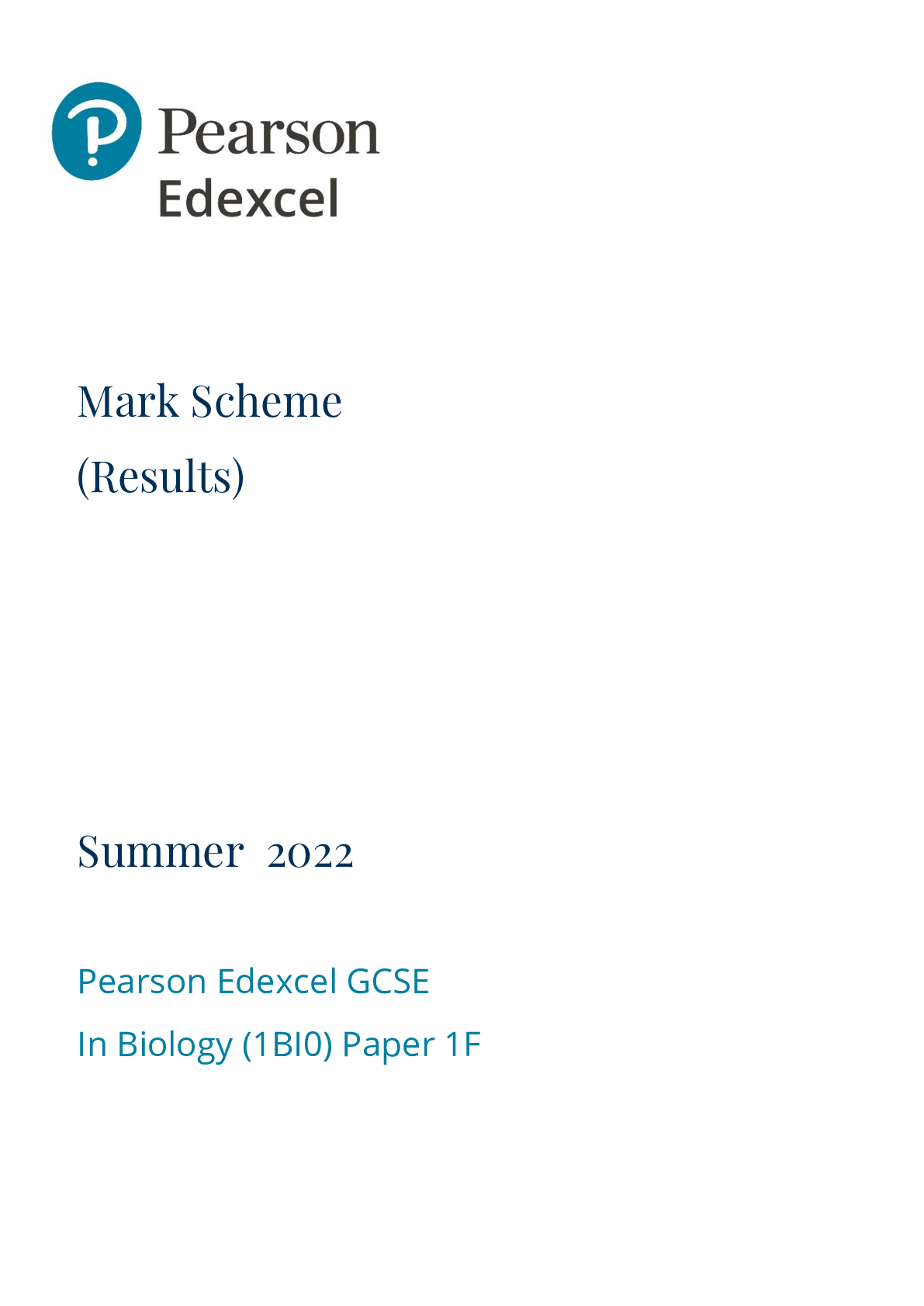
Buy this document to get the full access instantly
Instant Download Access after purchase
Buy NowInstant download
We Accept:

Reviews( 0 )
$8.00
Can't find what you want? Try our AI powered Search
Document information
Connected school, study & course
About the document
Uploaded On
Apr 03, 2023
Number of pages
33
Written in
All
Additional information
This document has been written for:
Uploaded
Apr 03, 2023
Downloads
0
Views
135


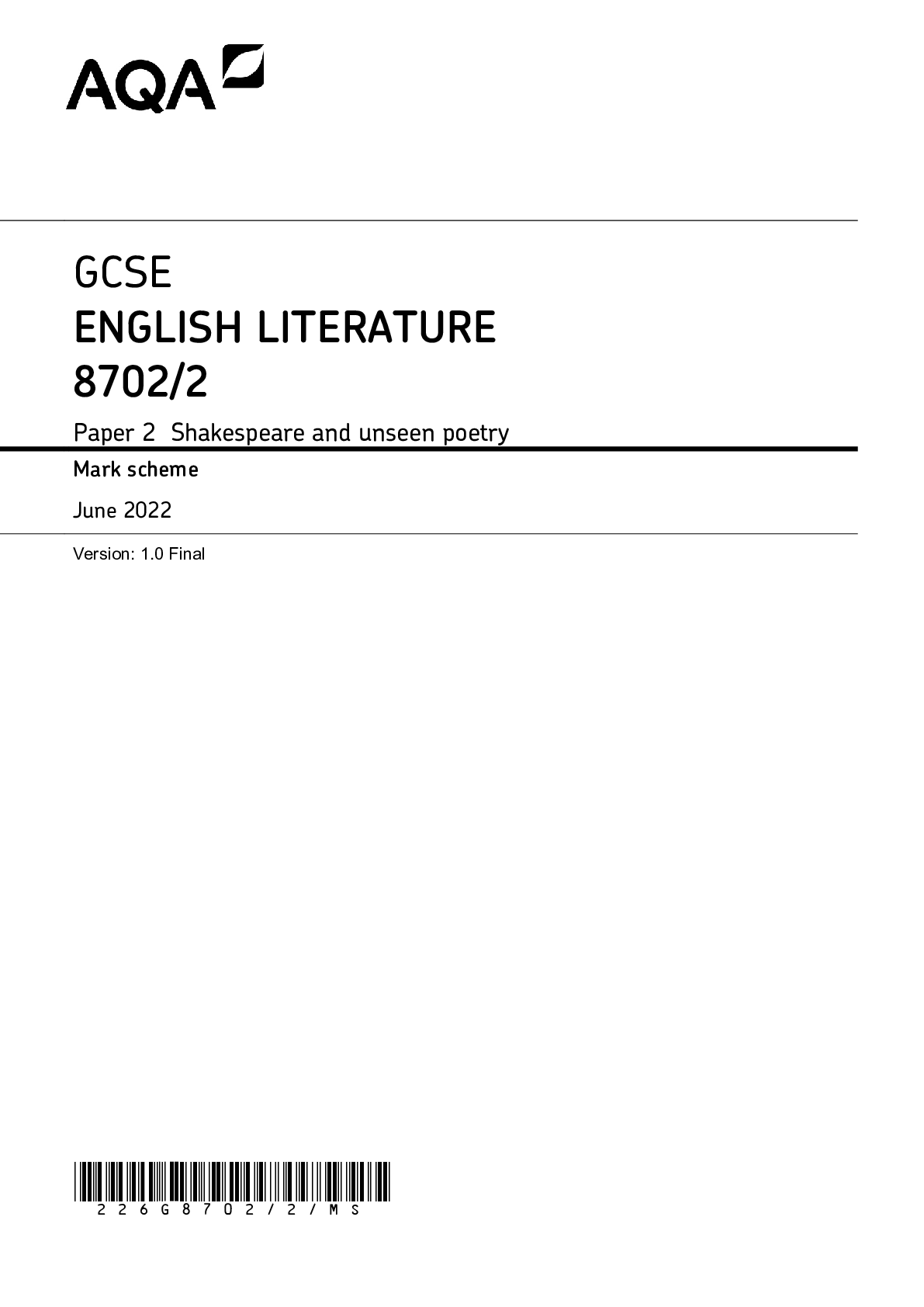


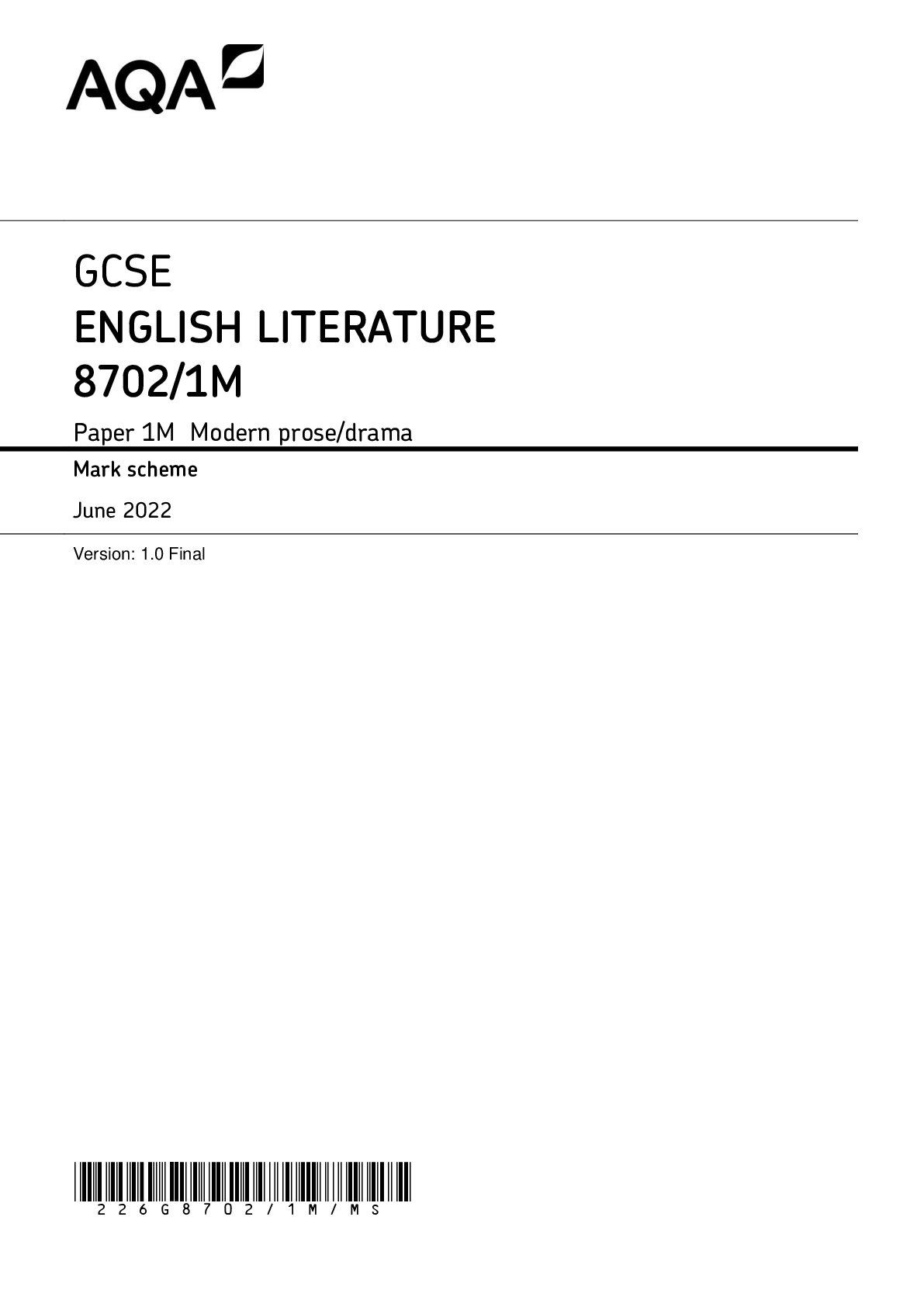
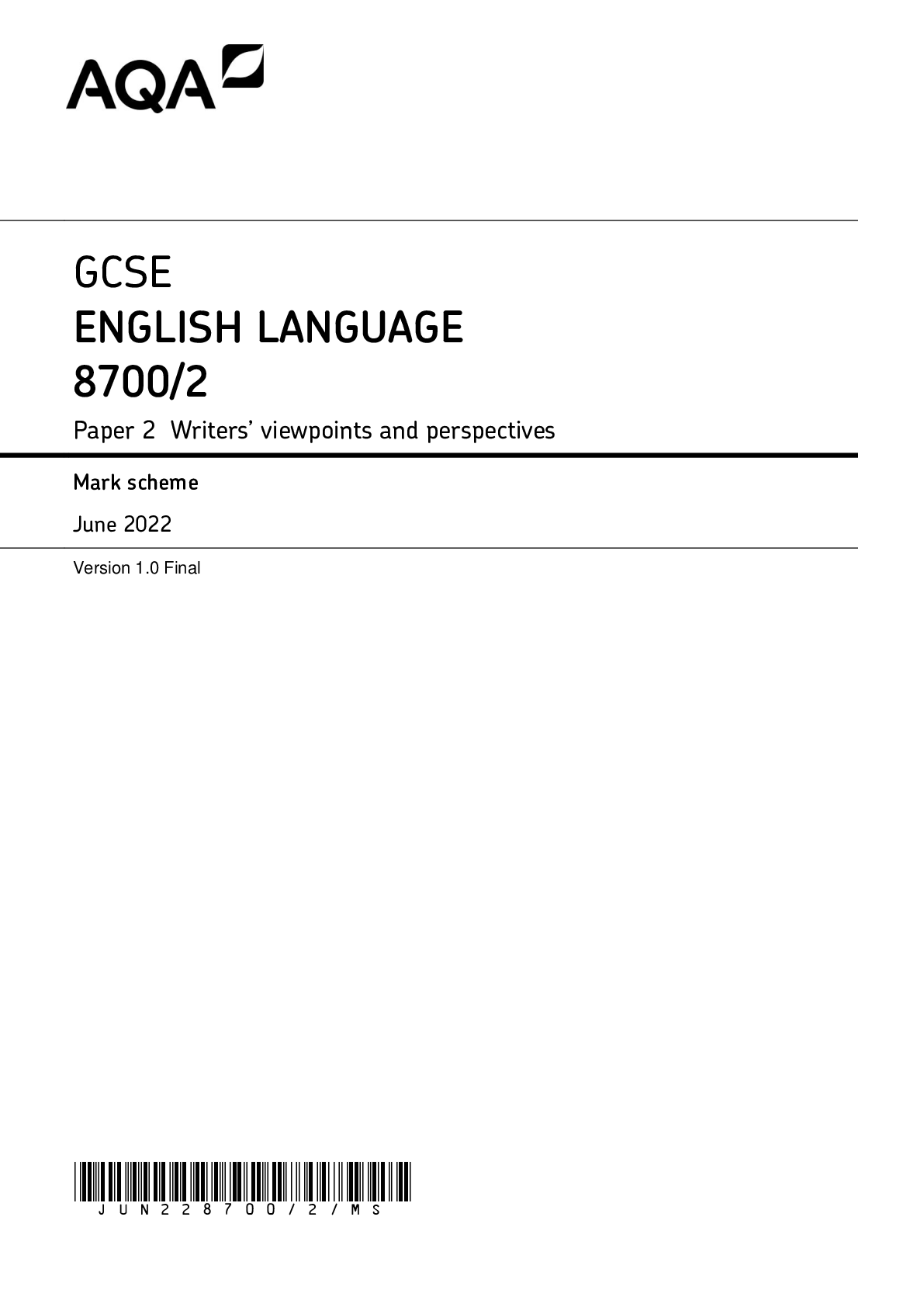
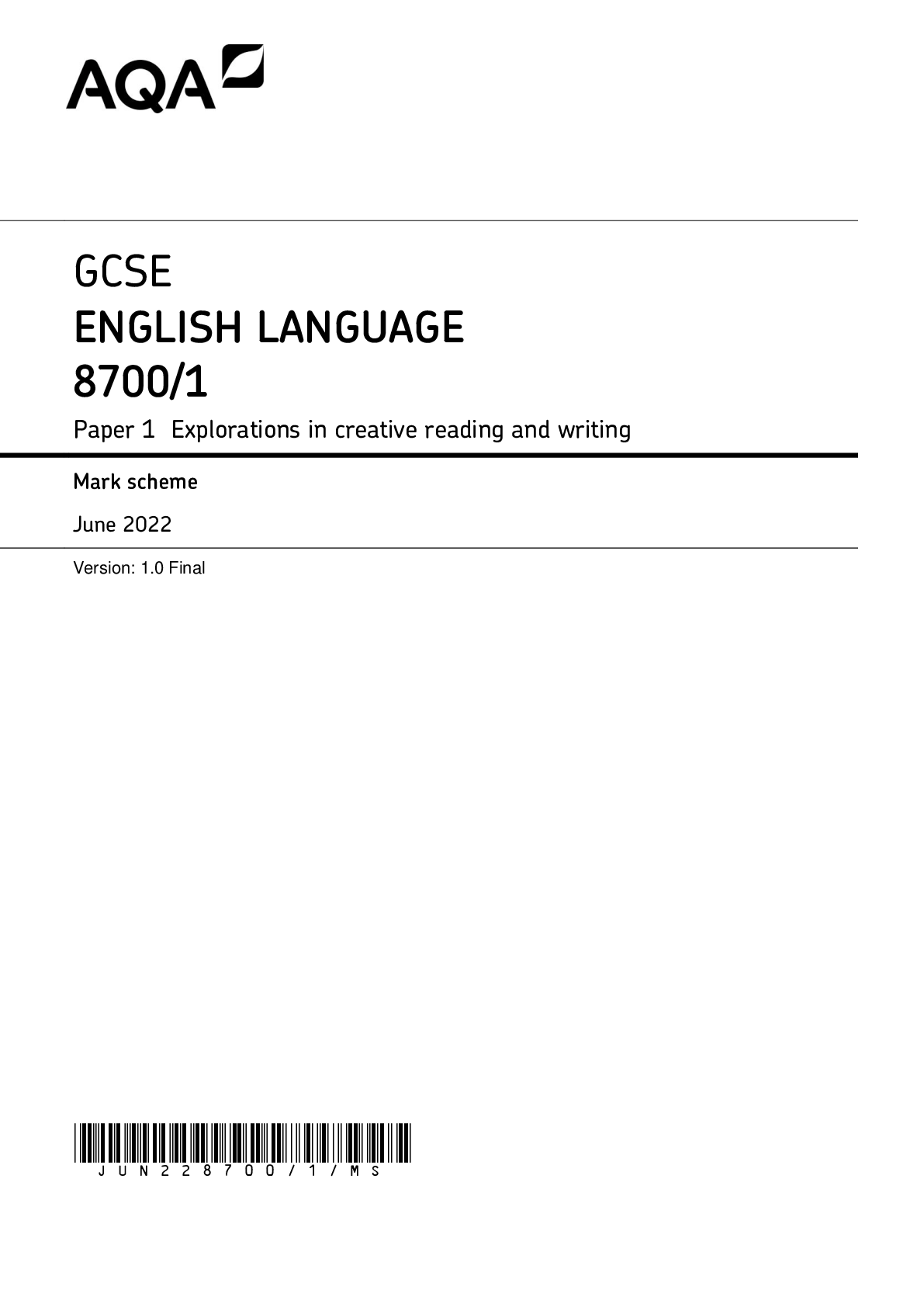
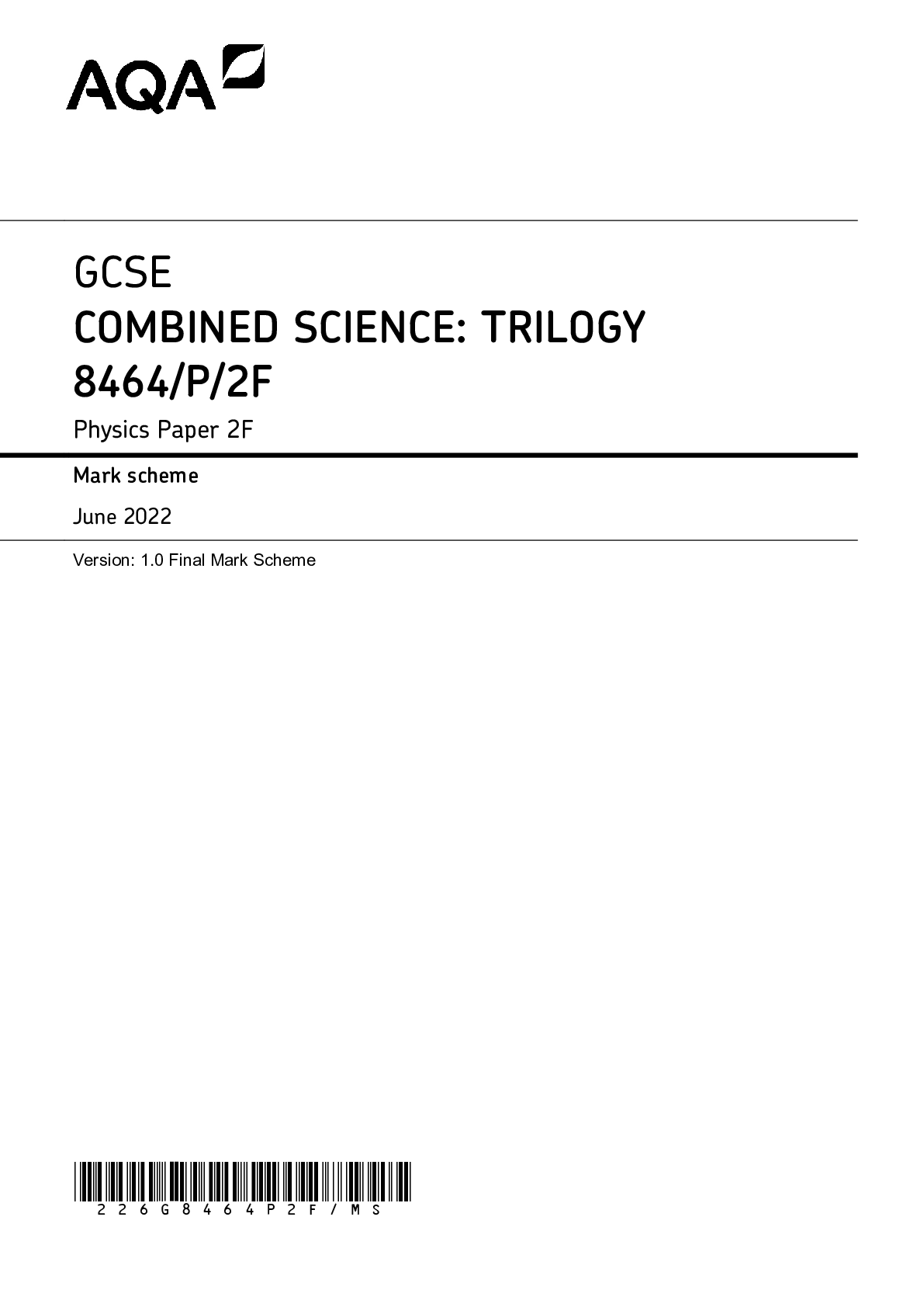
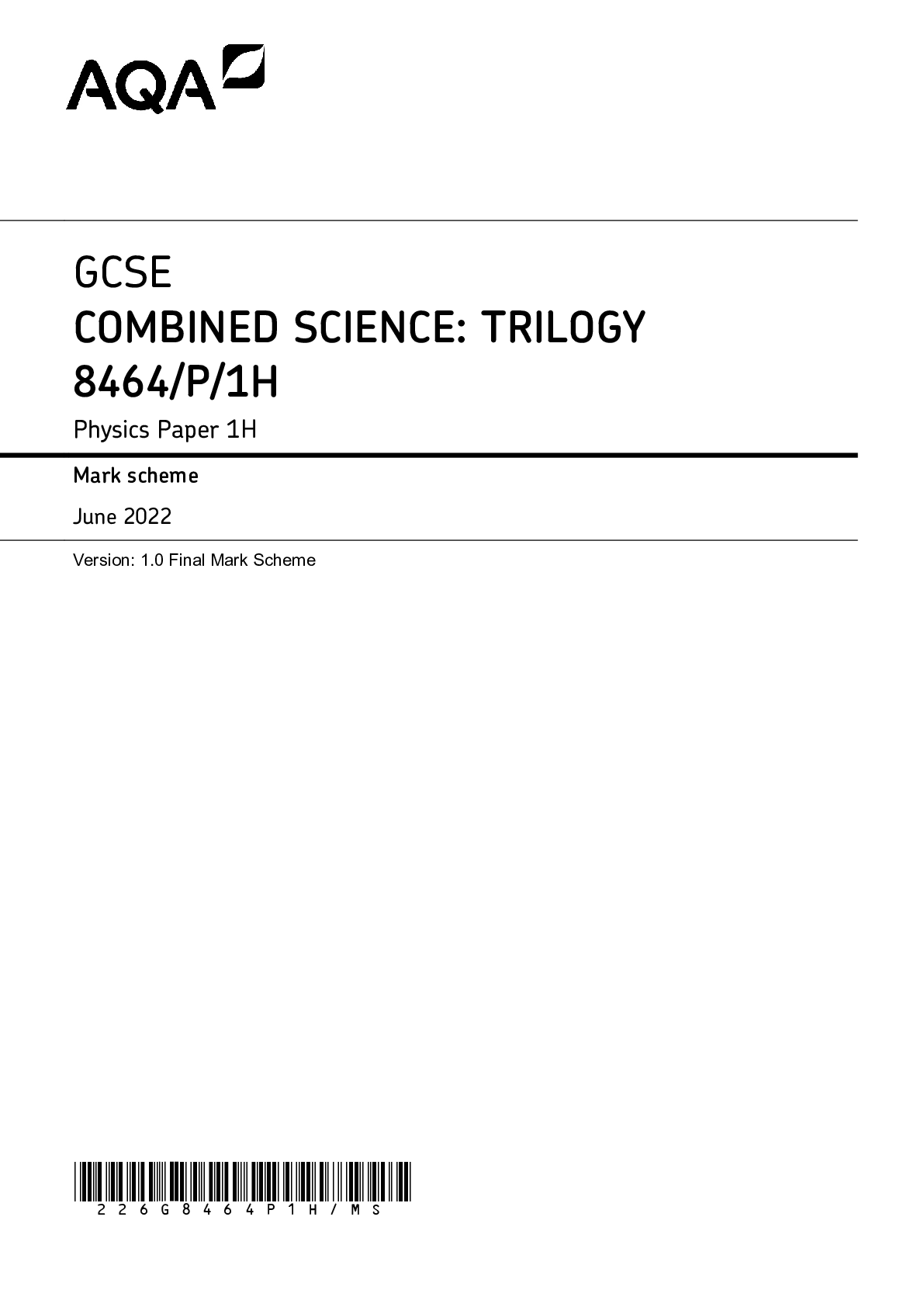
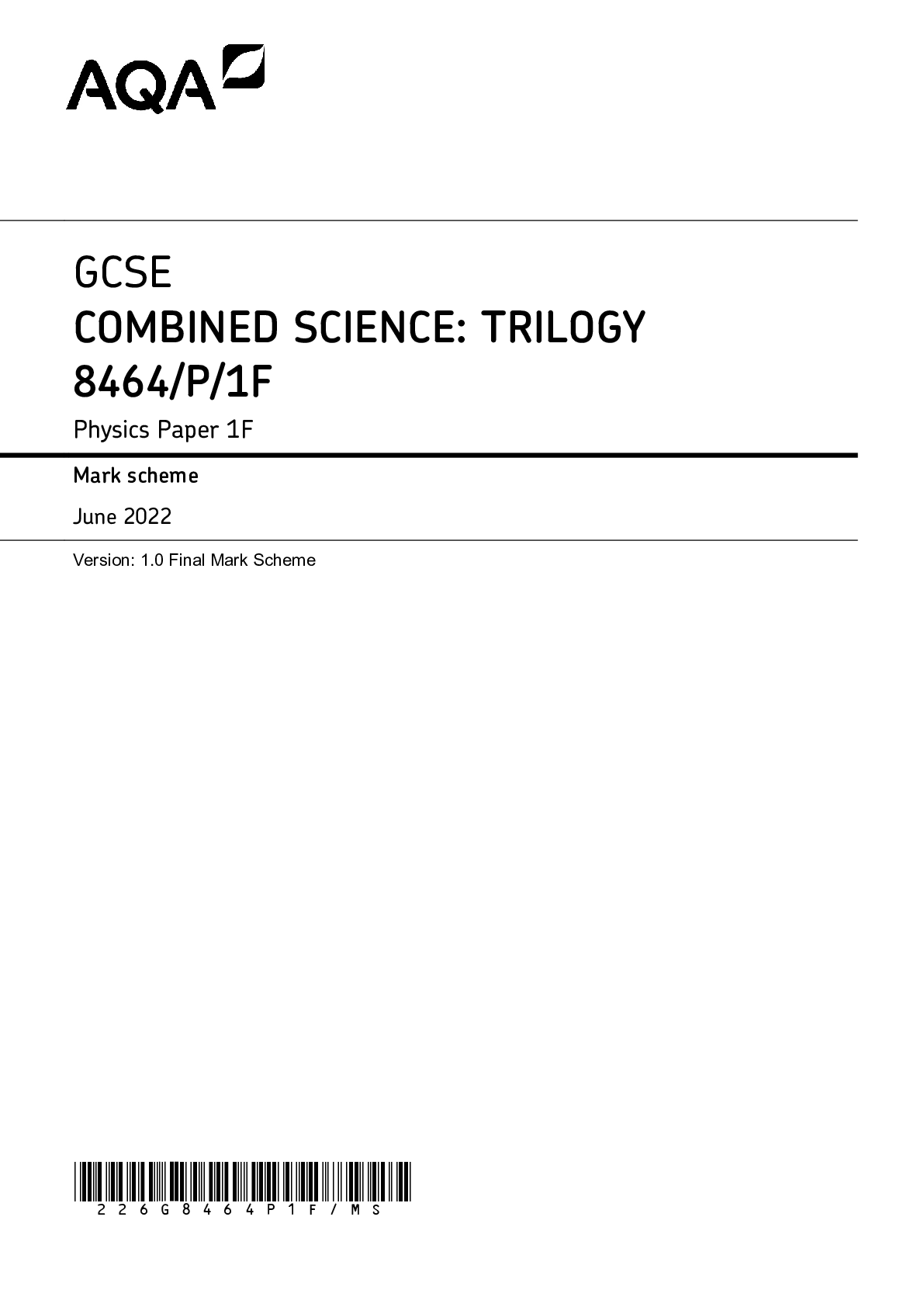



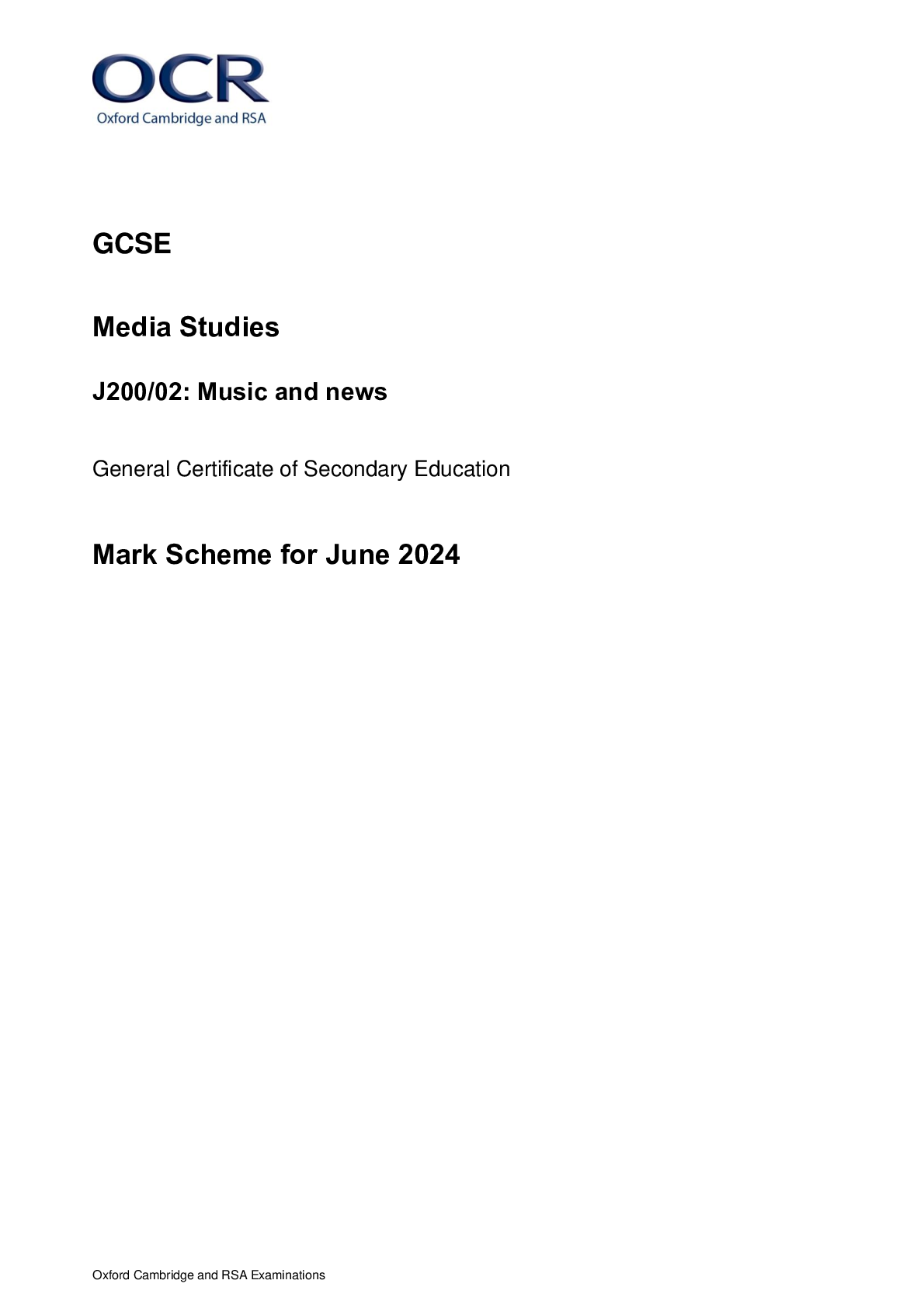

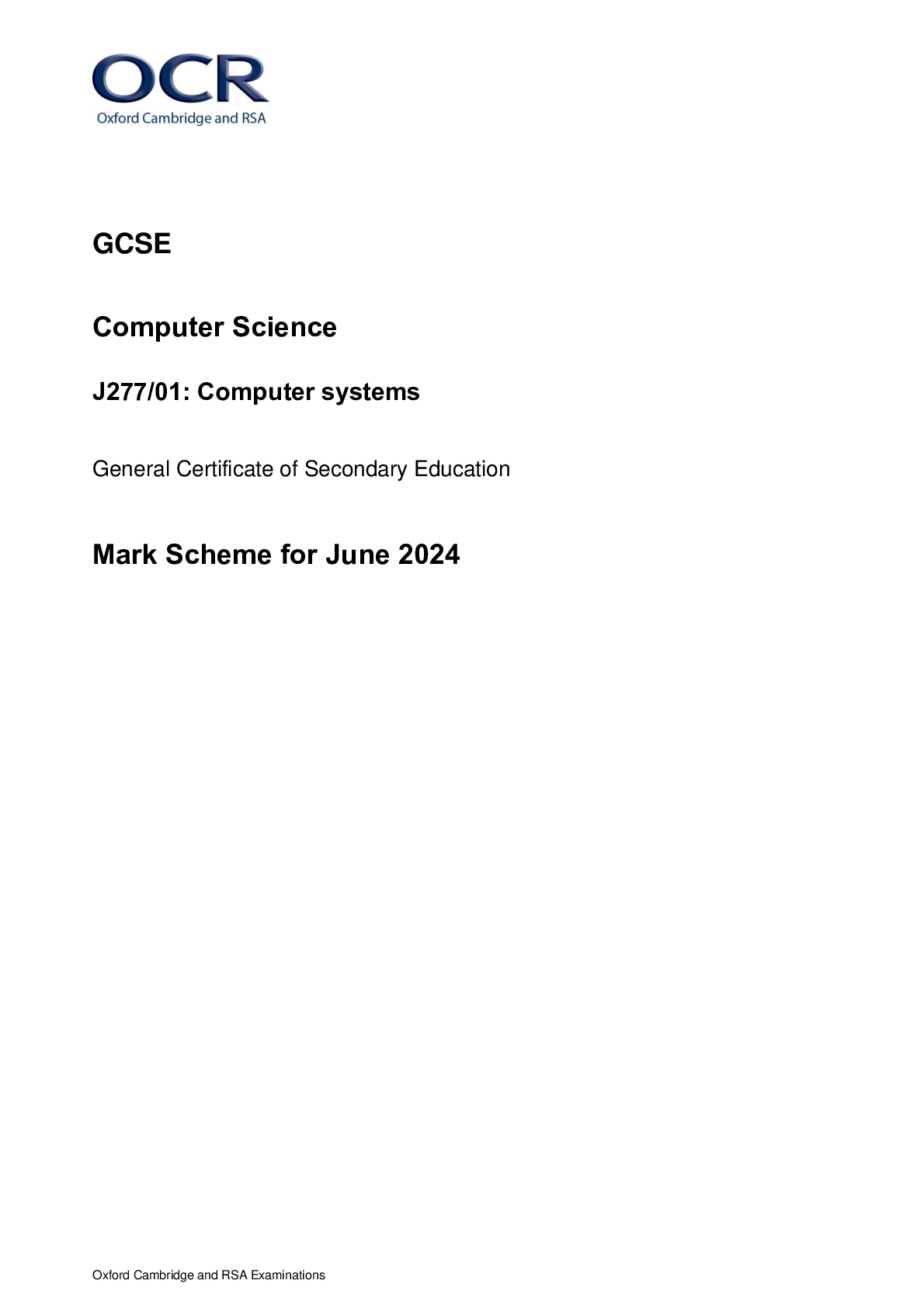
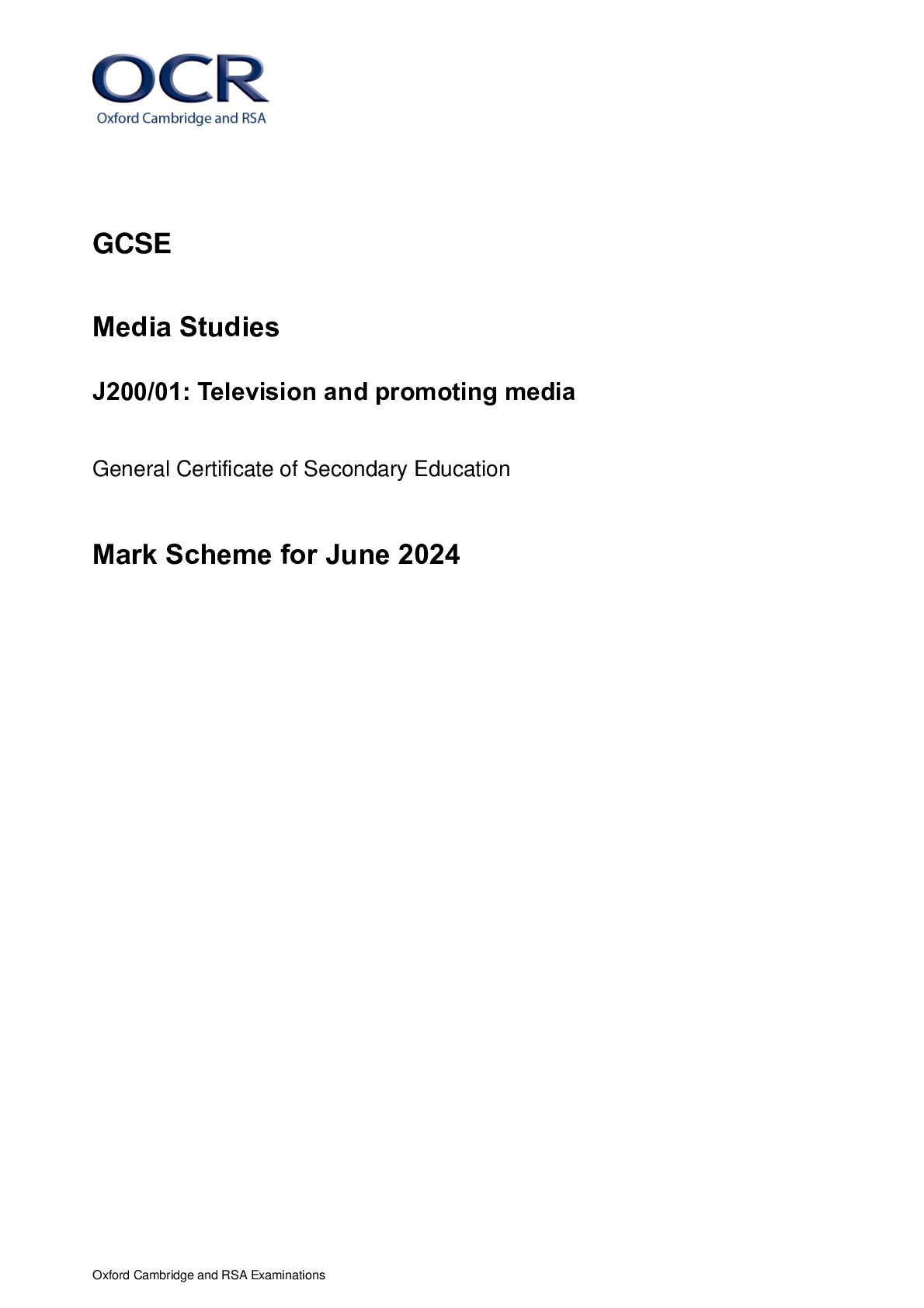
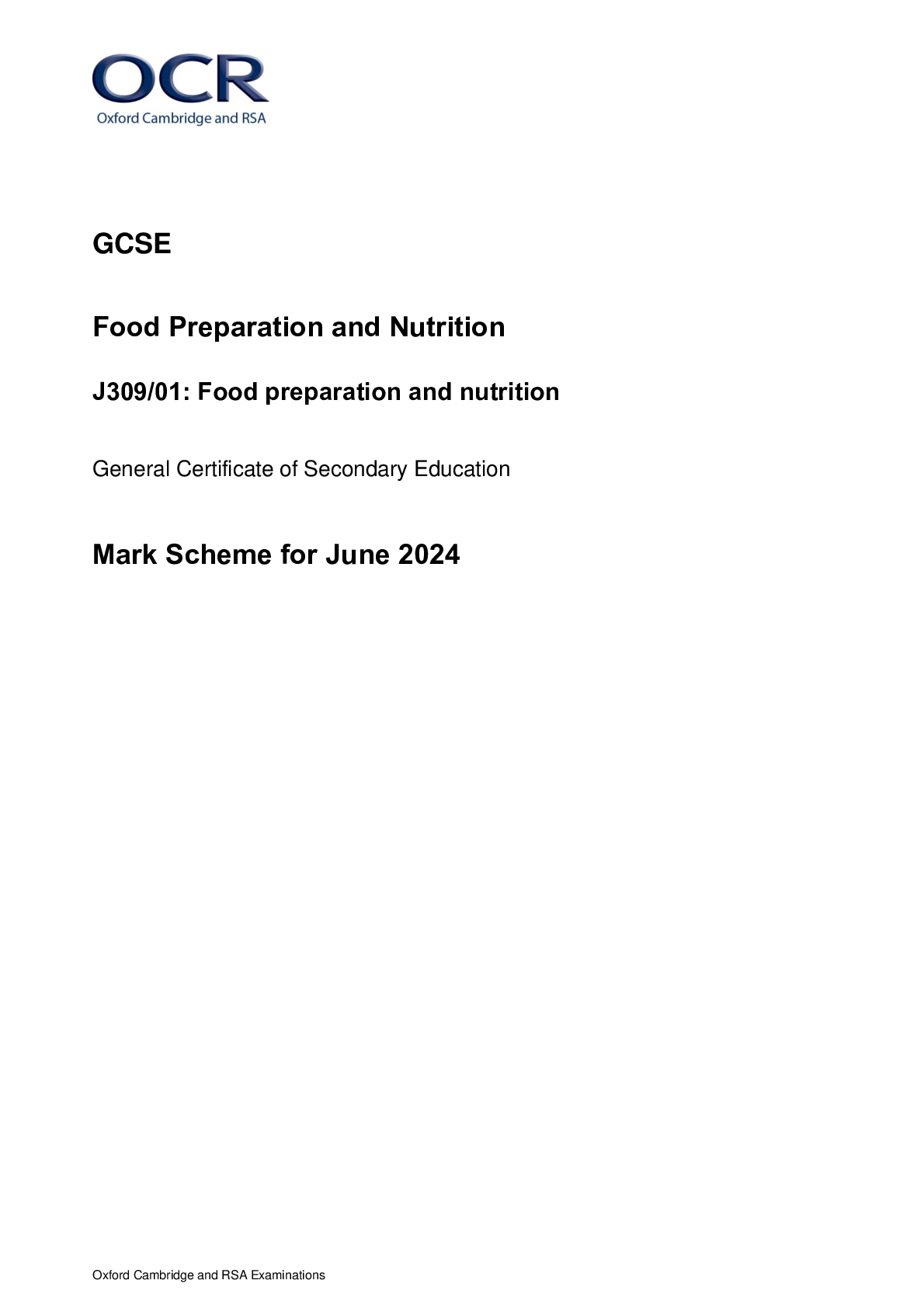
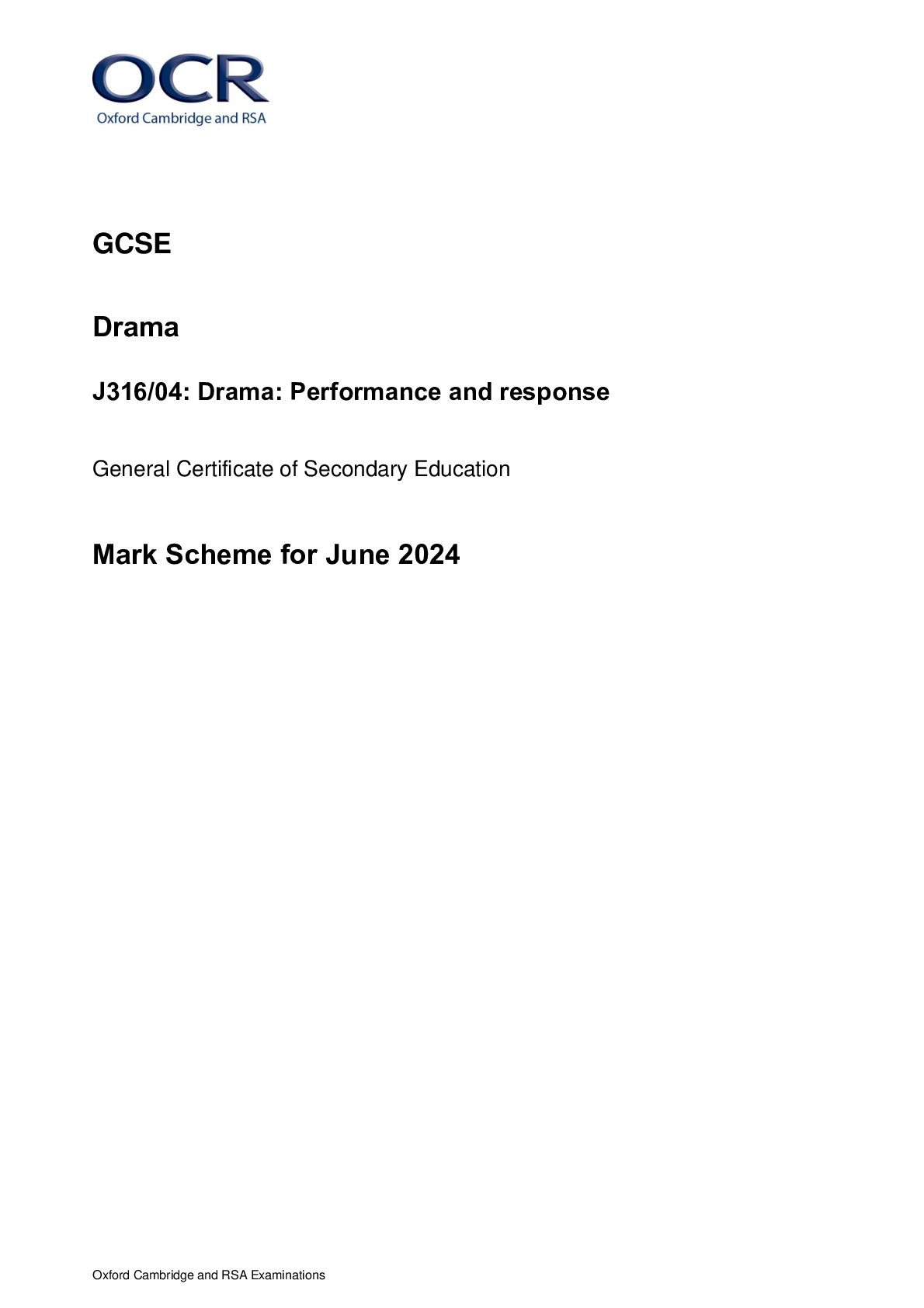
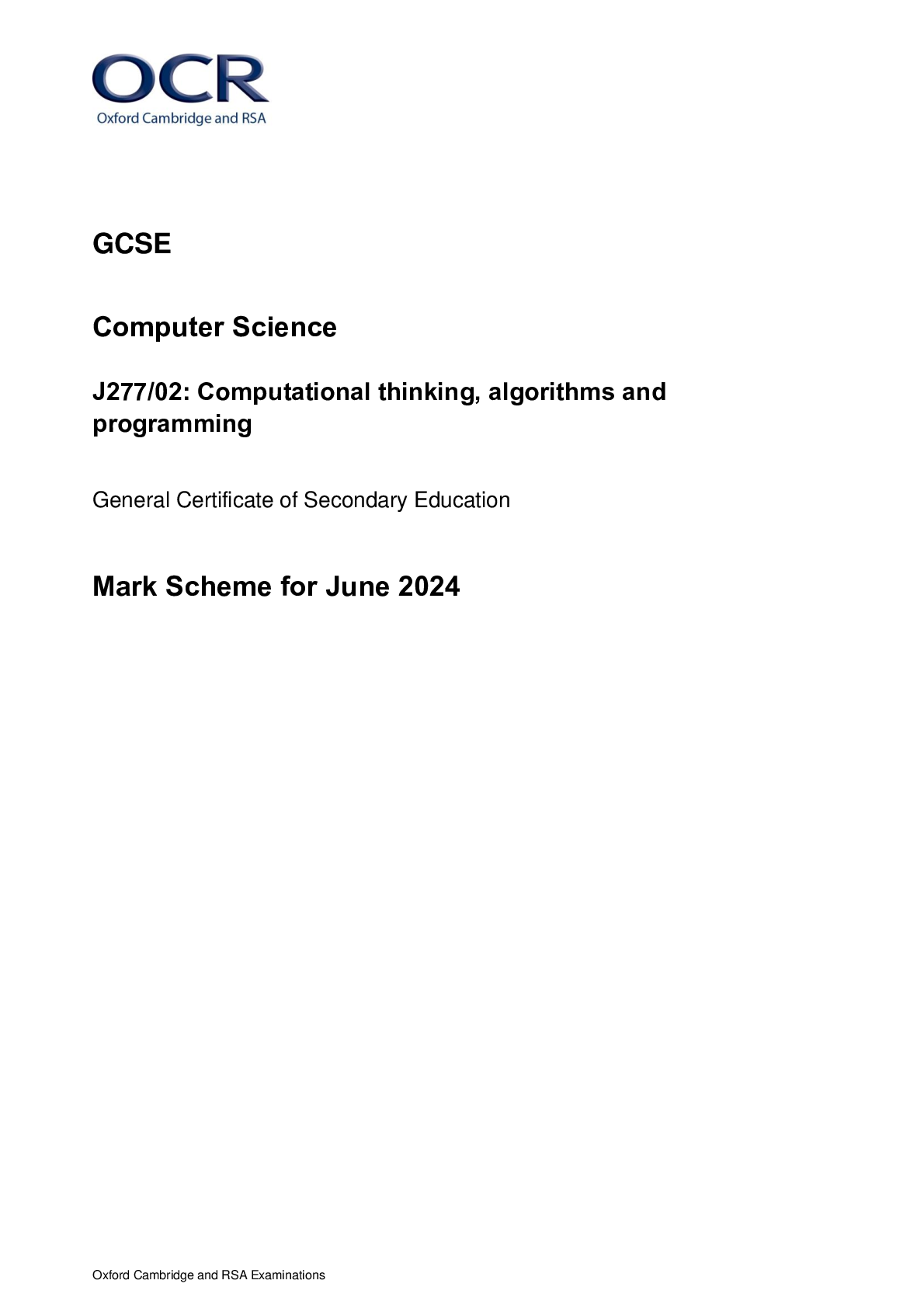
.png)

